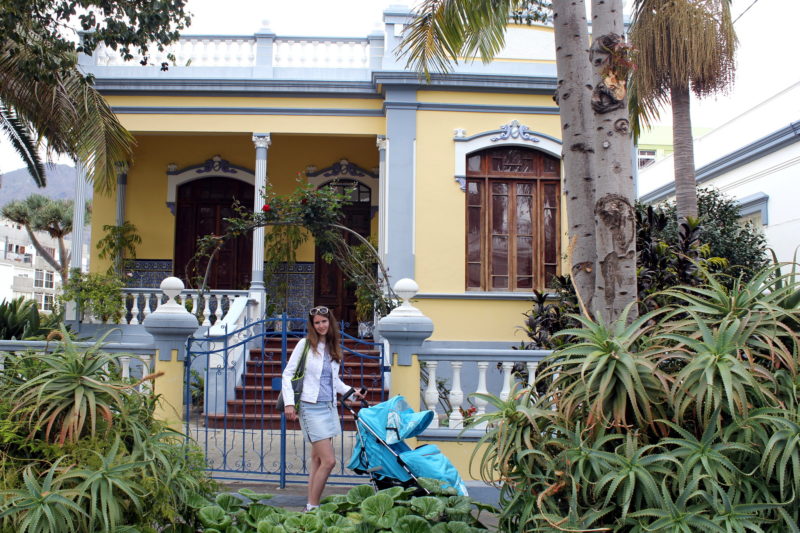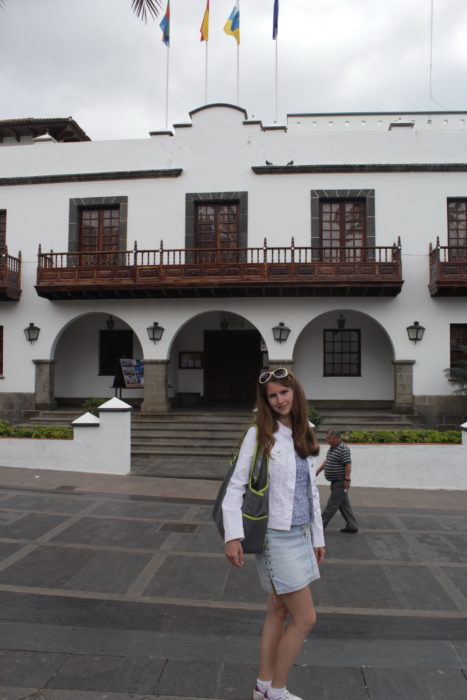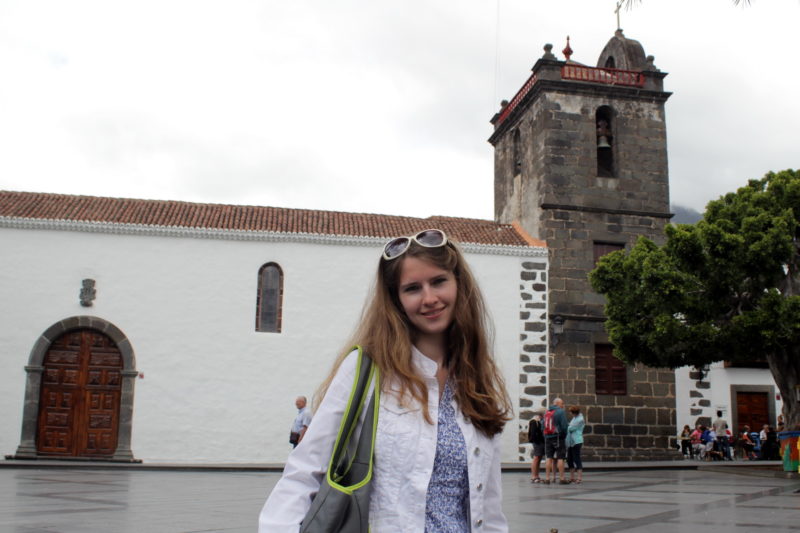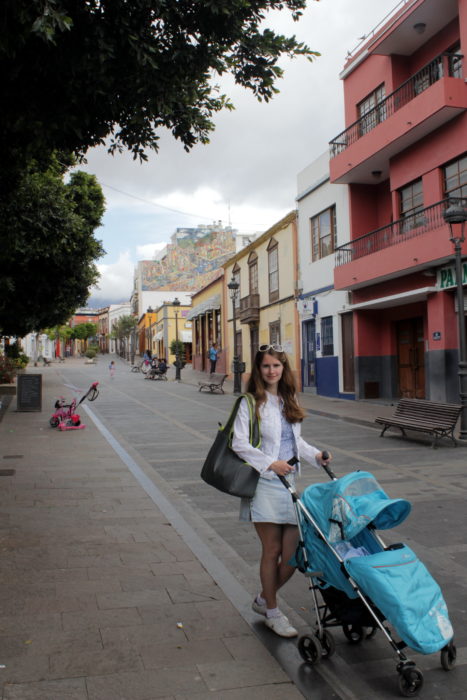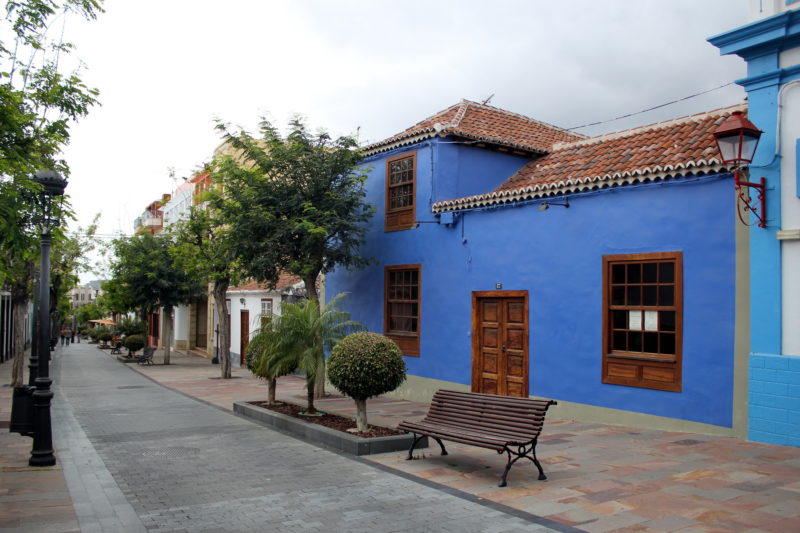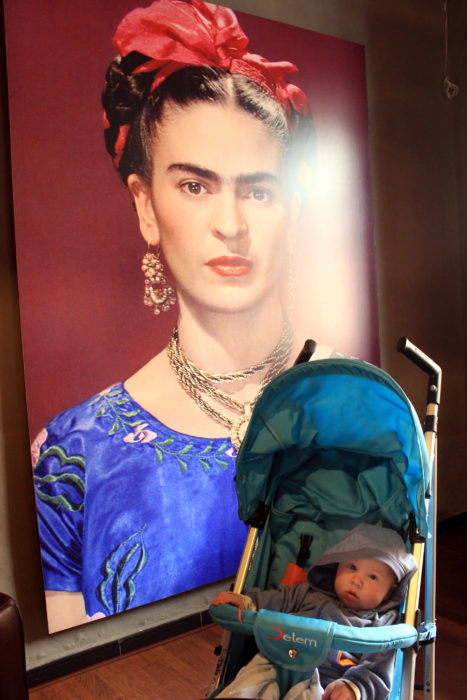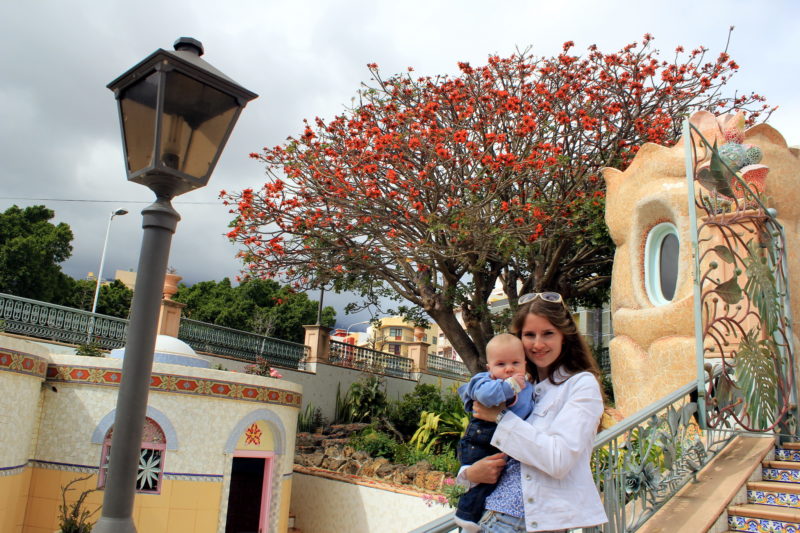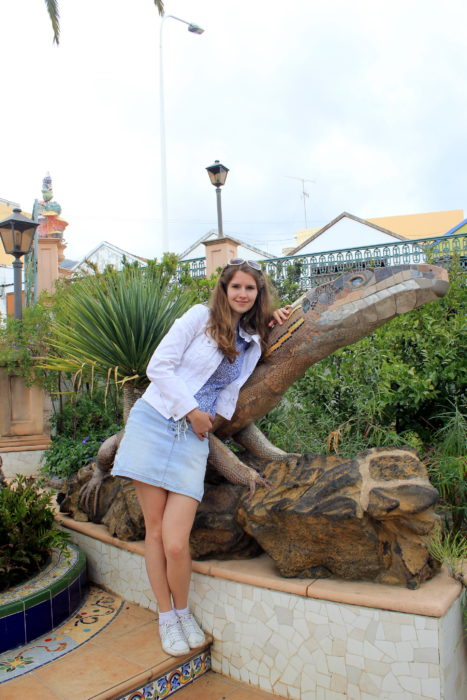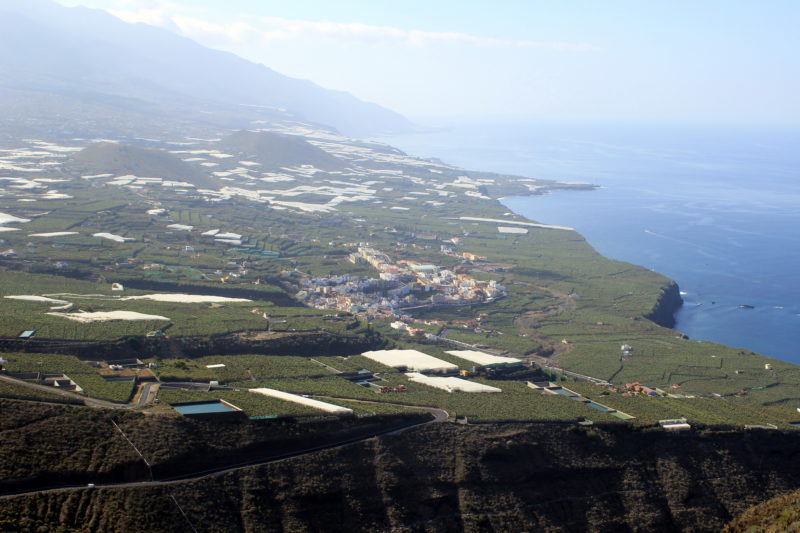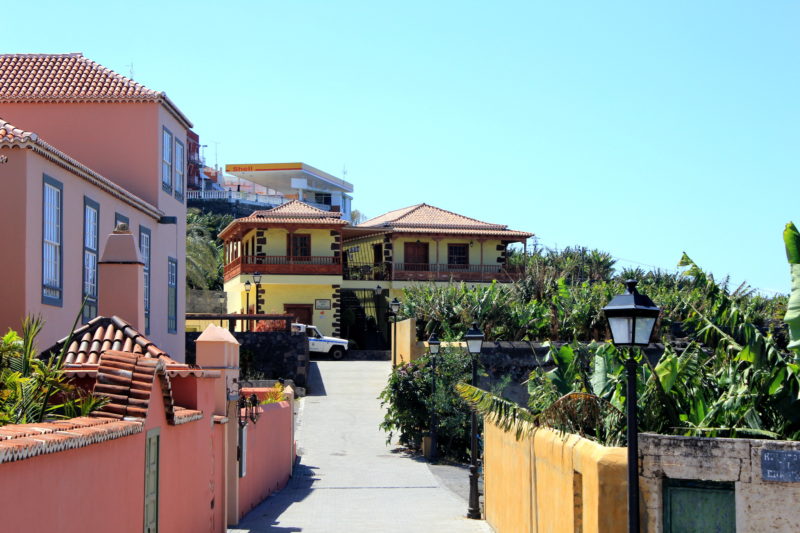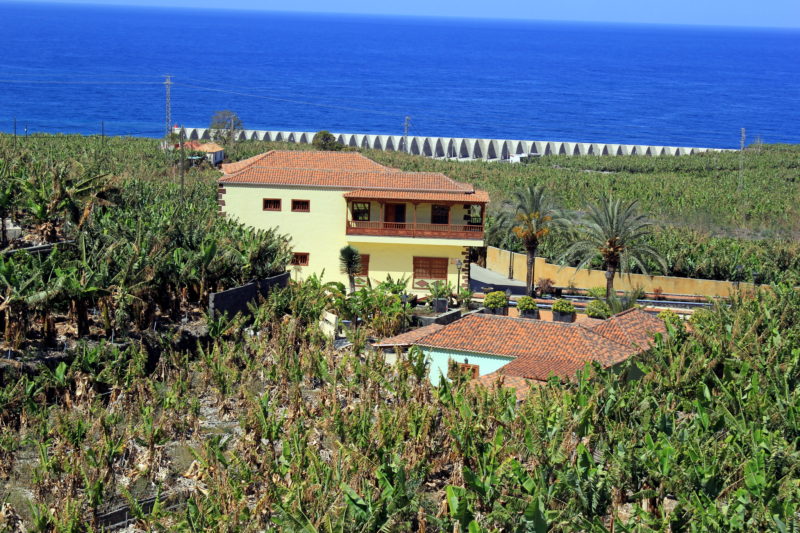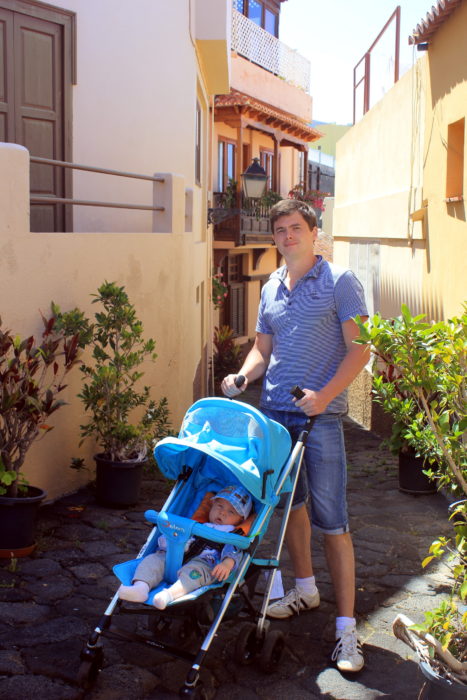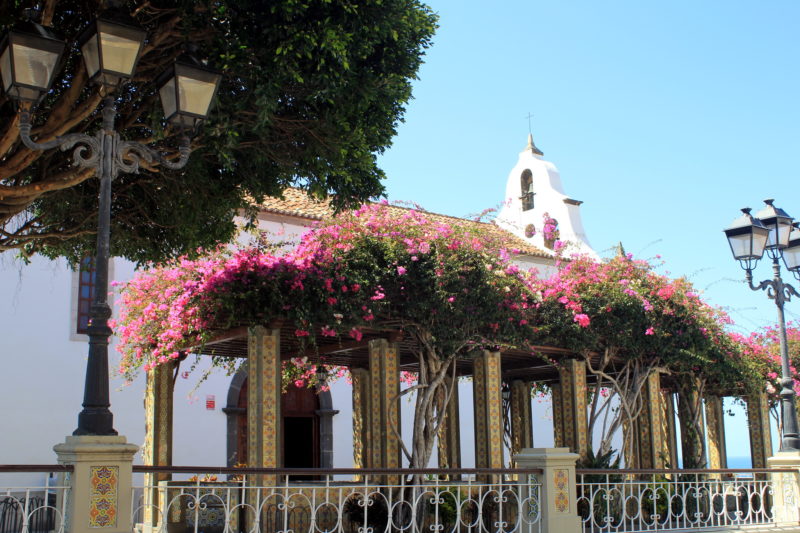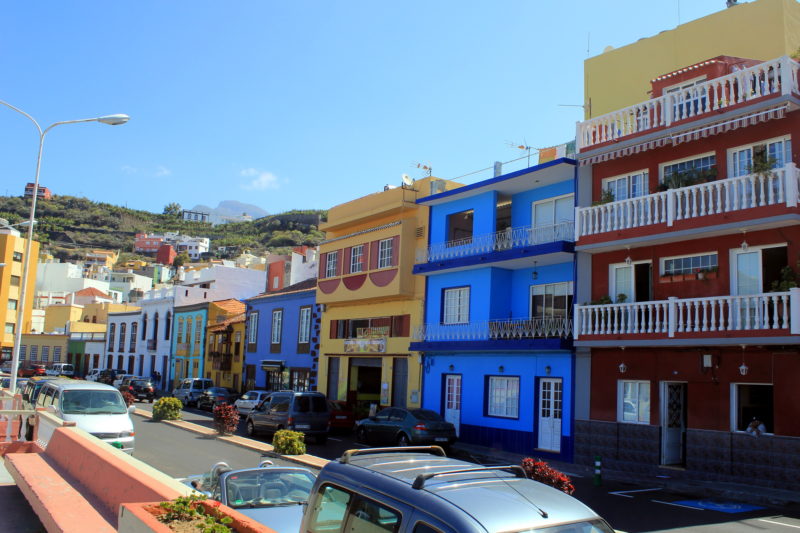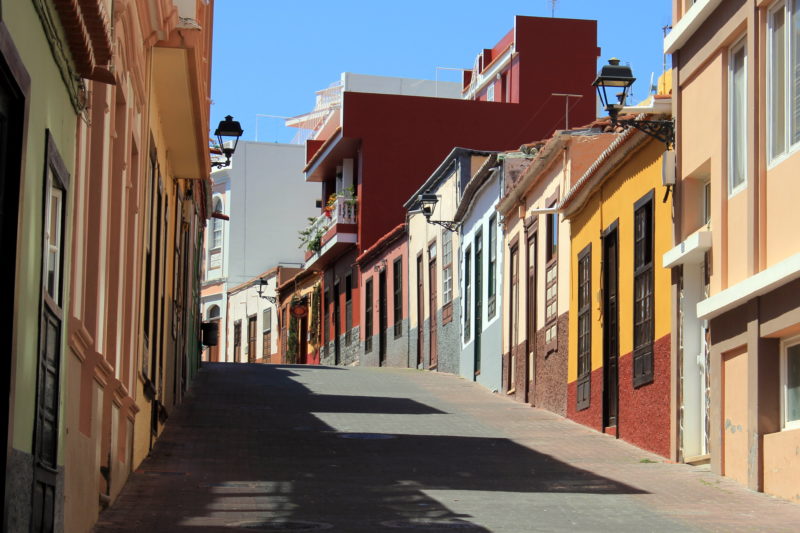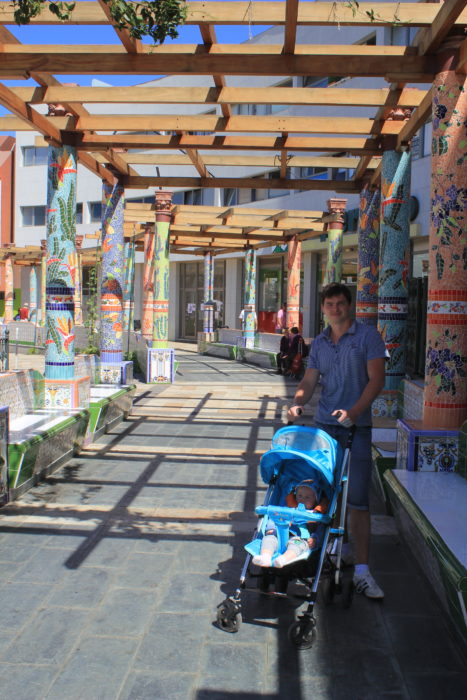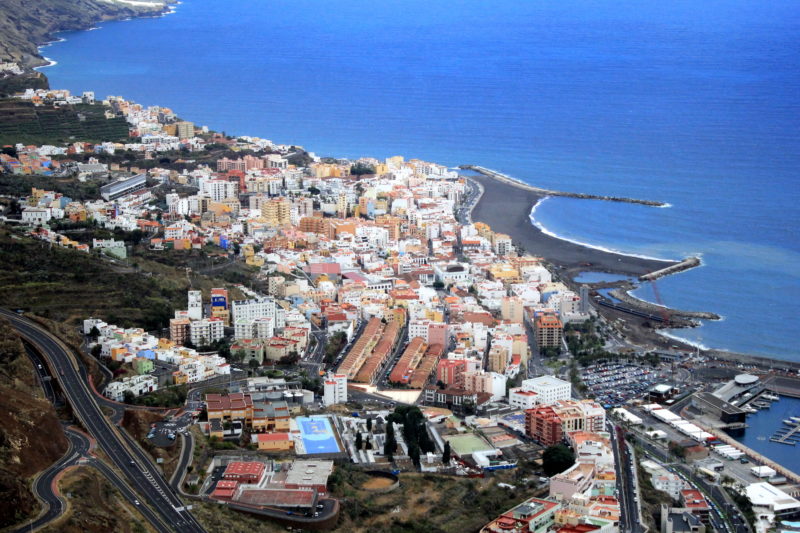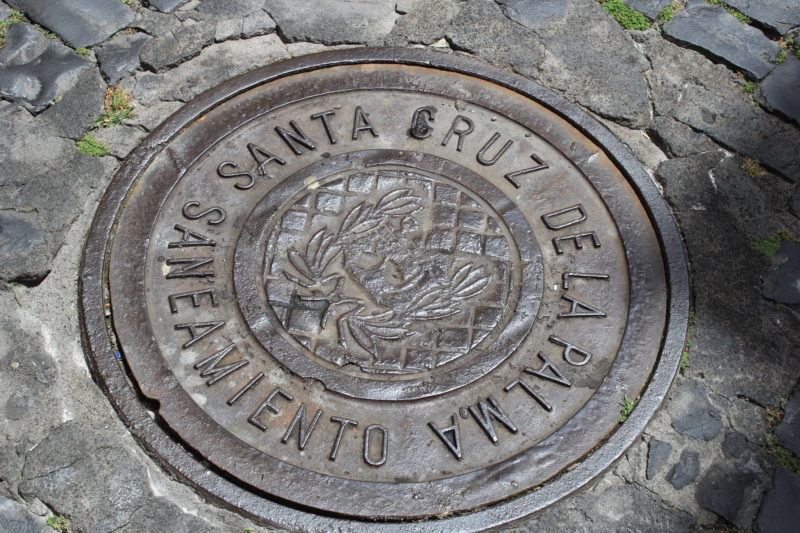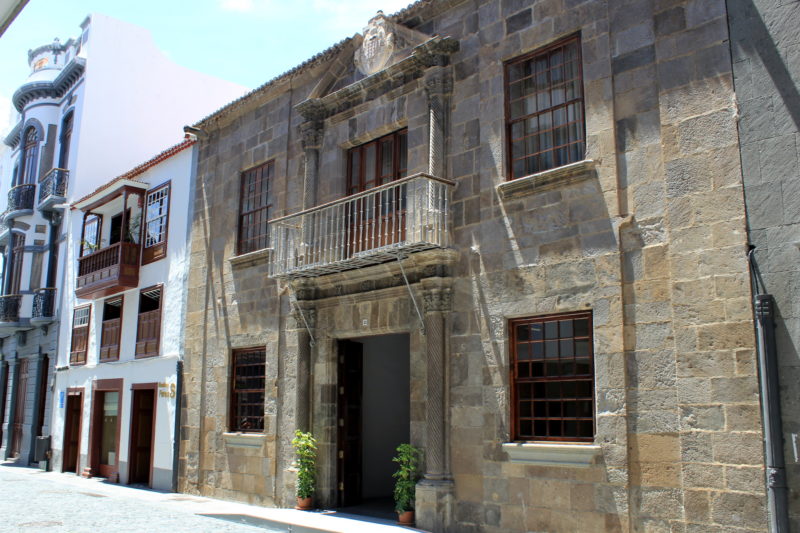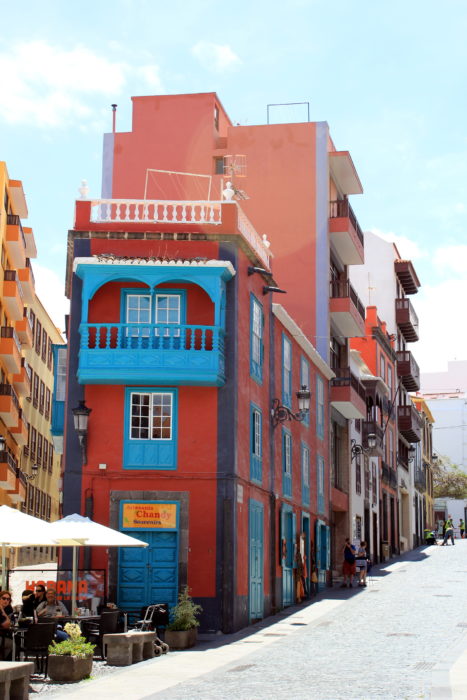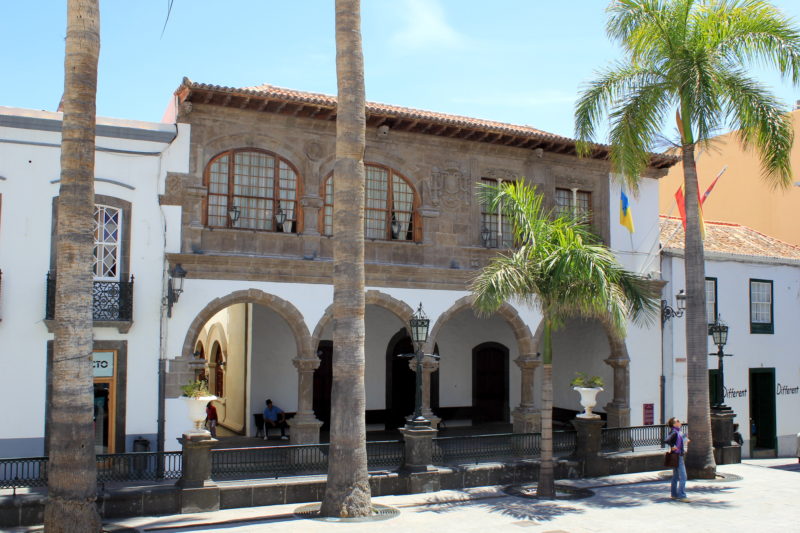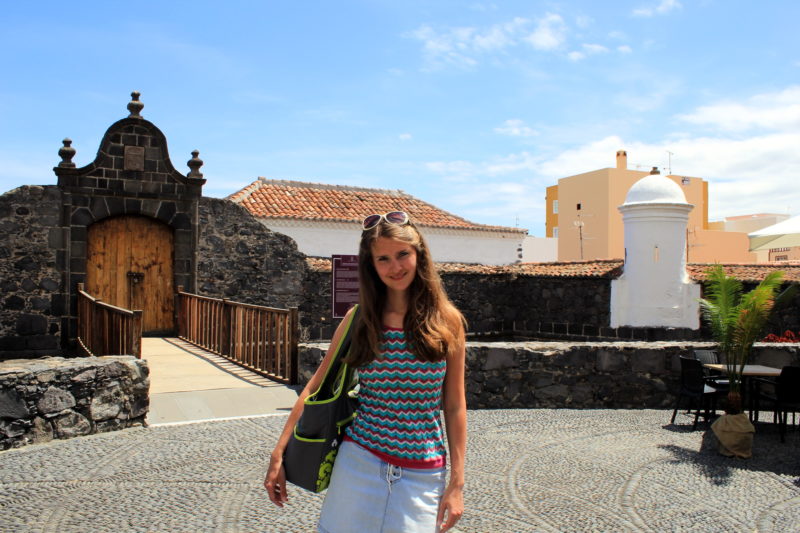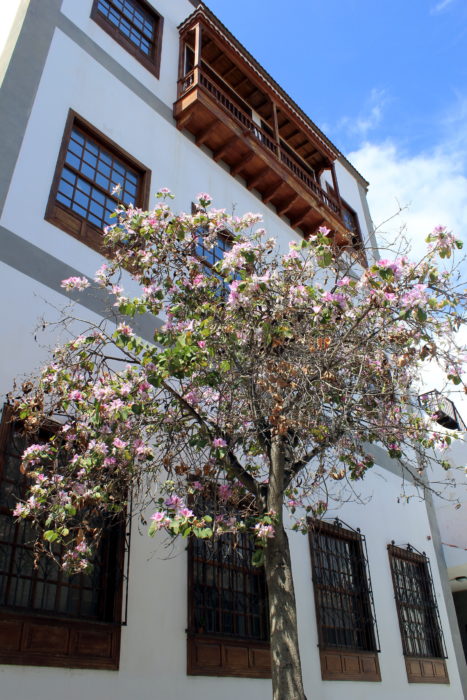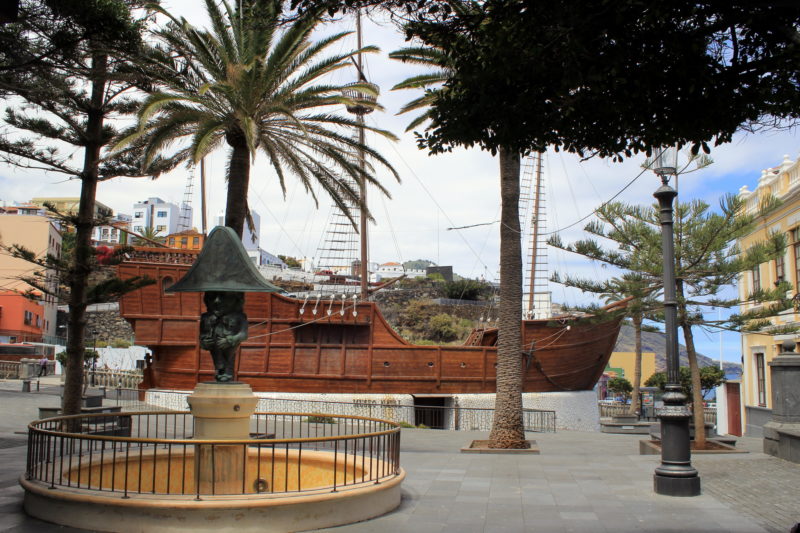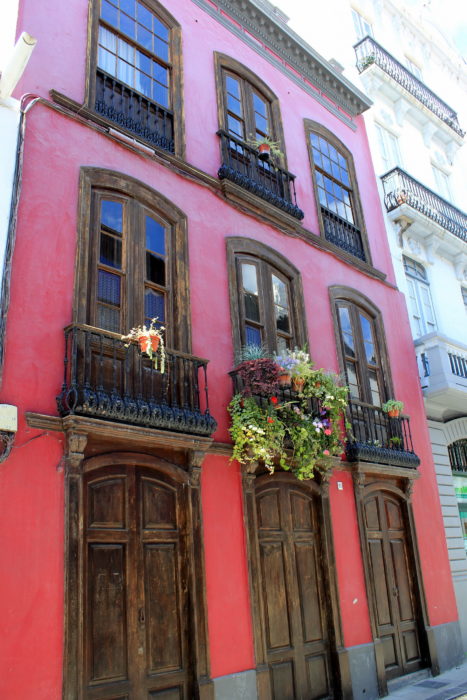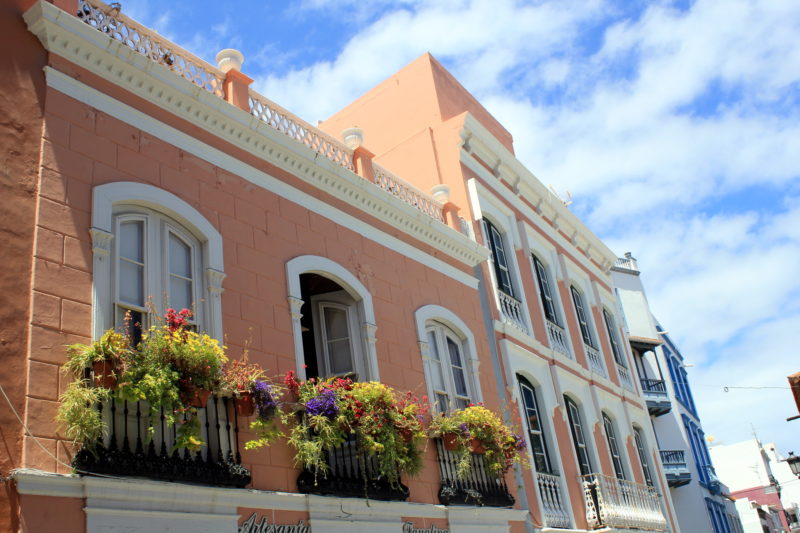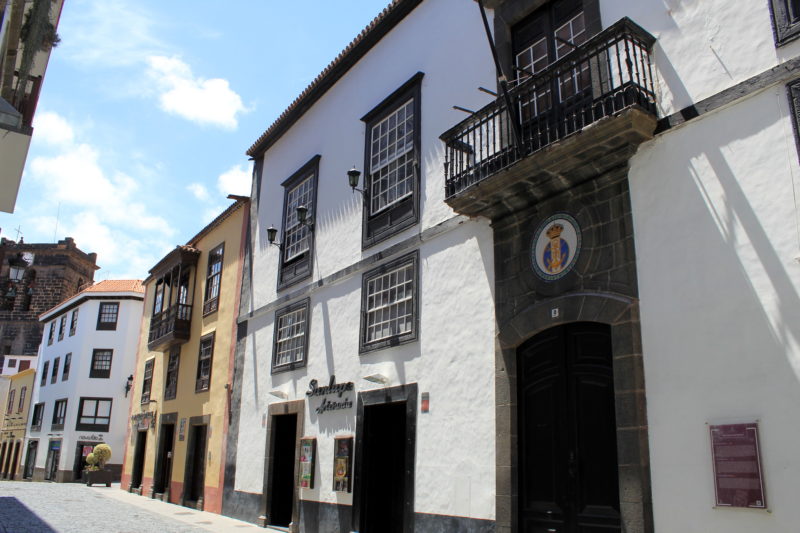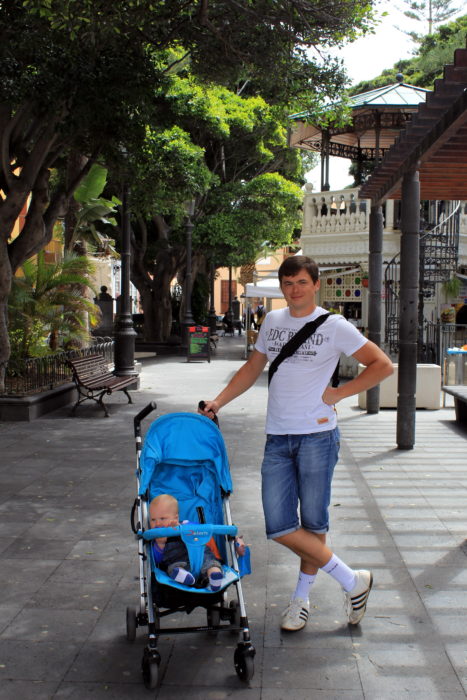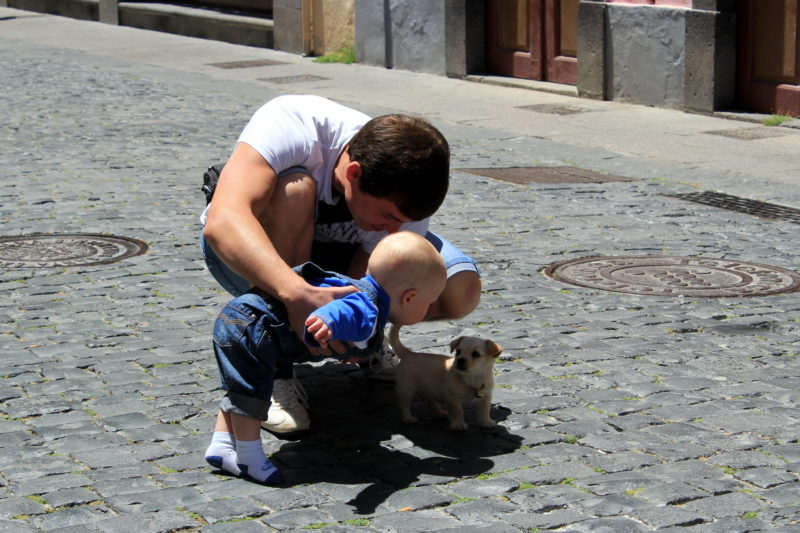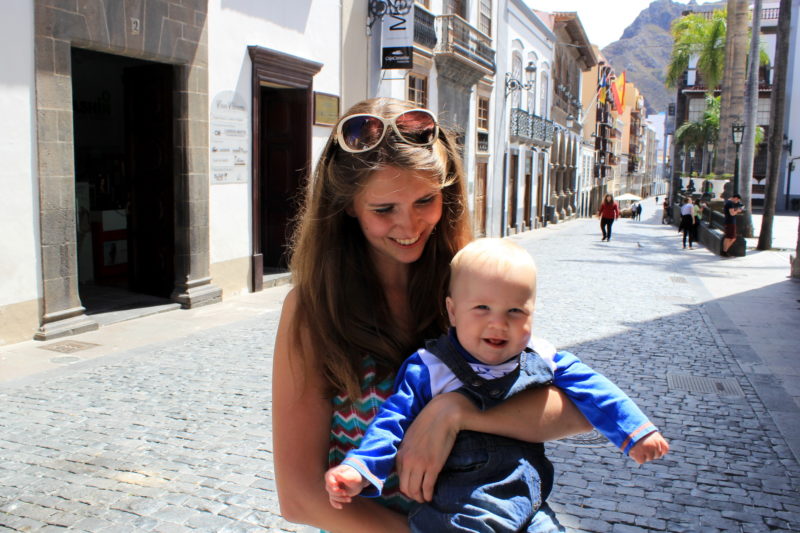
First of all, the time to visit the city is limited.
Secondly, museums and other similar places remain without our attention. The baby is unlikely to enjoy listening to a tour or looking at exhibits, even in your arms.
Based on this, the acquaintance was somewhat superficial, but still, I will highlight 3 cities on the island La Palma that are desirable to visit.
And if everything is clear with the capital. In Santa Cruz de la Palma, cruise ships arrive, so many tourists stroll around the city, but Los Llanos de Aridane and Tazacorte are often overlooked by many. But in vain. We managed to visit all the listed cities, see what came out of it.
Los Llanos de Aridane

I have already mentioned in previous articles about La Palma that this city is the largest in population on the island, surpassing even the capital, so we could not help but visit it. And there is also a very interesting cafe Frida located there. While preparing for the trip, I saw favorable reviews about it and decided that we would have to stop by, see everything with our own eyes and taste it.
To walk around, and most importantly, find parking without any problems, it’s best to plan your route from the municipal market and bus station (coordinates on the map). There are quite a few parking spaces there. As for the market, it is open daily from 6 am to 2-3 pm, closed on Sundays. You can buy various agricultural products from all over the island there.
Avenida Tanausú starts from the market, many houses here are built in a colonial style, with nice fences and small cozy gardens. It’s really interesting to walk along such a street. It ends at Avenida Doctor Fleming. On the Fleming Boulevard, there is a tourist information center where you can look at a city map, flyers for local establishments, etc.
Then begins the pedestrian part of the city with various historical sites. Let’s walk along Calle Real.
On the right side, you immediately notice the city council building, which is built in a typical style for the Canary Islands and decorated with a carved balcony made of Canary pine on the second floor. This building, like many others (for example, the municipal market) from the mid-20th century, was built according to the project of the local architect Tomás Machado (Machado y Méndez Fernández de Lugo, Tomás 1908-2003).
On the left side, it’s hard not to notice the Iglesia de Los Remedios church, dating back to the early 16th century. The interior decoration of the church, made in the Baroque style, as well as images of the Virgin Mary, are also worth attention.
We find ourselves on the Plaza de España square (place coordinates) – the very heart of the city. The square is interesting with its trees, here grow laurels and a palm tree, which were brought by migrants from Cuba in the mid-19th century.
Across from the church is the miniature Plaza Chica with a stone fountain in the middle.
And we continue walking along the pedestrian Calle Real. The path is conveniently paved and will be perfect for a stroll with a stroller.
We move to the neighboring Calle Calvo Sotelo street and there we see the Frida cafeteria (coordinates). Open from 11 am to 6 pm. Of course, we liked the interior design.
But more than the design, I was impressed by the prices: for a cappuccino, espresso, mango ice cream and 2 pieces of different cakes we paid €10.5. My husband got a «Russian Cake», in which we recognized «Annushka». Honestly, it was nice to meet something familiar so far away. The portions are large and tasty. And most importantly, the baby really liked it in the cafe too. The cafe has 2 floors and on the second there is a terrace overlooking the street. Since we were with a stroller, we decided to stay on the first floor near the portrait of Frida Kahlo.
The cafe itself is small and cozy. There are no child seats, but since the tables are low, it’s convenient with a stroller, you end up at the same level, and the chairs are generally suitable for going with children. The stroller quickly became boring and my son spent most of the time sitting in the chair.
After the cafe, we decided to take a walk to the Parque Antonio Gomez Felipe park (coordinates). The park is small, richly decorated with mosaics and invites a leisurely stroll.

Tazacorte
Tazacorte is a small town, interestingly, it’s kind of divided into parts. The upper town and its tiny continuation in the ravine — Puerto de Tazacorte with a nice beach and port. Where sightseeing ships depart along the coast of the island and out to sea to observe dolphins and whales.
Let’s talk about the upper part of the town. It is interesting for its historical part — the Barrio de El Charco district (coordinates), where you can find mansions from the 17th century.
Here is an interesting place — a laundry where local women used to wash their clothes. Currently, it’s a tiny square in the photo above, but the name has been preserved.
Also, a fairly popular place is the Banana Museum (Museo del Plátano, cost €2). Here they tell about the life and history of the island, about bananas, how they are grown, harvested, and processed. You can walk through a banana plantation.
In principle, if you’re going and walking around, you can visit. If you’re not a fan of bananas, nature, etc., feel free to skip it.
After admiring the mansions of the El Charco district, we go up to several squares.
The first small square, Plaza de la Vica, is a gathering place for locals.
Nearby is the Church of San Miguel (Iglesia de San Miguel). The church has been reconstructed several times, which took place in different centuries, but the year of construction is indicated as 1513.
We head out to the wide Avenida de la Constitución. The brightly painted houses please the eye.
We finished our walk around Plaza Enrique Noguerales. Here is the city council, a sculptural composition, and mosaic gazebos covered with bougainvillea.
As for Puerto de Tazacorte, there are practically no sights there.
But there is an excellent wide beach, a promenade with numerous fish cafes and restaurants, and a port for sightseeing boats. Many tourists come here primarily for the wide beach with fine sand and fish cafes. The nearby port supplies fresh fish to the establishments. It becomes very difficult to find parking for lunch, so as a tip, come in the morning if you don’t want to park in the ravine about 500 meters from the beach.
Santa Cruz de La Palma
Looking at the island’s capital from the Mirador de La Concepción viewpoint, the first thought was how small and compact it is, with everything in plain sight. But after walking through it the first time and being charmed by it, we decided to come back again. We were staying on the eastern part of the island and traveled to the city by bus No. 500. The stop is located near the hotel. The current schedule is in effect, and the buses adhere to it, with only a small deviation of 5-10 minutes.
The fare is €2. Payment can be made in two ways: cash directly to the driver on the bus or with a multi-ride pass (Tarjeta de Bonobus). The pass can be purchased at stores or tobacconist kiosks. If you use it, depending on the route, the fare itself will be 20-50% cheaper. Another advantage of such a card is that several people can use the pass simultaneously.
In bygone times, the island’s capital was one of Spain’s leading trading cities and attracted people from all over Europe to these parts.
Much of this city’s appearance has remained from the late 16th-17th centuries. A major pirate raid, looting of the city, and subsequent fire that occurred in 1553 destroyed the previous buildings, but the city was very quickly rebuilt, and many buildings have survived to this day, with some minor restorations.
Numerous churches, squares, mansions, cobbled streets — this is how Santa Cruz appeared. The city is called a pearl of Spanish colonial culture and architecture, and it’s hard to argue with that.
As in any capital, you can find various boutiques, cafes, shops, souvenir shops, handicrafts, and more to suit any taste and budget.
The Plaza de España (Spain Square) captivates with its beauty. The square has a triangular shape, and on each side, there are structures of cultural and historical value:
— The City Hall (years of construction 1559 to 1567). In its basements, there used to be a prison, and on the second floor, the parliamentarians met.
— The Court building (1558) is located next to the City Hall.
— The Church of El Salvador (Iglesia de El Salvador), built in 1500. Note the square bell tower of the church. The church’s façade belongs to the Renaissance-Mudejar style. And the clocks were imported from London itself.
The Castillo de Santa Catalina (Santa Catalina Castle) is worth attention. It’s a small fortress that actively participated in defending the city from pirate raids and foreign invaders. In the 16th-17th centuries, the sugar cane trade flourished on the island, bringing wealth to local merchants. Simultaneously, this wealth attracted various conquerors. To protect the city, castles and redoubts were built along the coast.
Passing from the fortress to the Avenida Martima promenade, you’ll see casas del balcones (houses with balconies). On the Canary Islands, you can find similar houses in various cities, but in La Palma, there’s an entire cluster of them.
An interesting exhibit is located near the La Alameda square (coordinates). Before us is the Ship of the Virgin (Barco de la Virgen), an exact replica of the world-famous ship. Which one? I had only one option since I knew from history that the Canary Islands were a stopover point for Columbus’s journey to America. So, this is a replica of Columbus’s ship Santa Maria (Holy Mary). Currently, there’s a maritime museum here. The museum features navigation instruments, original ship’s logs, maps, archival documents, etc. The current fortress was restored between 1683-1692 on the site of a previous one destroyed by flooding.
The capital is also unusual in terms of historical events. The rule of the so-called «Elders,» which existed on the island and was passed down by inheritance, led to a popular uprising and revolution in 1773. The first elections were held, and a Senate was created as a governing body. Time passed, and in 1812, a Constitution was adopted. The city differed significantly from the rest of the empire and was progressive and unique for its time.
In 1975, Santa Cruz was declared a historical-cultural heritage site. Strolling along the main streets of this city, calle O’Daly and Calle Pérez de Brito, and observing the numerous mansions, churches, and monasteries in the area, it’s hard to disagree.
In all the listed cities, we walked with a stroller. We encountered almost no difficult-to-navigate places.
In the capital itself, we had to climb stairs to reach some attractions, in which case we simply left the stroller at the bottom.
A leisurely exploration of the city can be nicely combined with relaxing in the shade of numerous cafes or occasionally peeking into various shops and stores. Behind the walls of many mansions, beautiful Patios are hidden, so if time allows, peek inside and admire the unique features of Spanish architecture.
We really liked the city, so we decided to change our plans for the last days on the island and went back to Santa Cruz for another visit. Everyone found entertainment to their liking. I wandered through numerous shops, buying souvenirs for relatives and friends back home. And my son got acquainted with the locals, as shown in the photo above.
If you’re staying on the eastern side of the island in the town of Los Cancajos, such trips to the capital will diversify your beach vacation. If you plan to visit the capital by car, it’s best to park near the port and Plaza de la Constitusion (coordinates) and then walk along the pedestrian streets of the city. The distance to La Alameda square, where the ship is located, is 1.2 km. With a walk along the promenade, visiting neighboring streets, and returning to the car or bus, the route will be approximately 3 km.
Enjoy your stay on La Palma.


